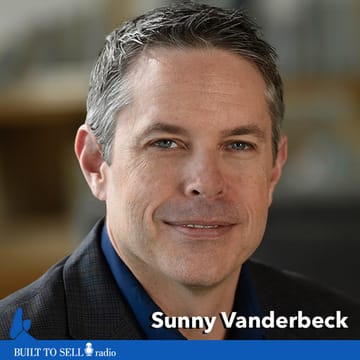About this episode
Sunny Vanderbeck was growing Data Return 40% every quarter when he took the company public in 1999 on the way to a market capitalization of more than $3 billion. Until the bubble burst.
To read a transcript of this episode, click here.
Back in 1996, Sunny Vanderbeck started Data Return, a business that provided website hosting to big e-commerce companies. They grew 40% every quarter leading to an Initial Public Offering (IPO) in 1999 and an eventual market capitalization of $3 billion.
Then the internet bubble burst.
Customers started failing and Data Return’s growth flat lined. Despite the effect the market crash had on Data Return’s business, computer giant Compaq still saw a lot of value in the company and readied an acquisition offer of around $1 billion.
Closing day with Compaq came and went without a signed purchase agreement. Three days later, Compaq announced they had merged with HP. Compaq’s acquisition of Data Return was dead.
Data Return was burning cash and Vanderbeck figured they had six months to get a deal done before they could face mortal danger.
Find out what Vanderbeck did next to fall from running a $3 billion company to owning some shares in a bankrupt business – to ultimately ending his lengthy stint by selling Data Return to Terremark Worldwide for $70 million in cash and $15 million in Terremark stock.
Sunny’s story includes both the best and worst of selling companies, in this episode you’ll learn:
- The definition of reverse due diligence and how to do it on your acquirer
- 3 tips for ensuring you don’t end up regretting the decision to sell
- When to listen to your advisors (and when to tune in your gut instead)
- The definition of “fundamental reps” and how to react to an acquirer’s request for them
- The definition of “founder’s speak” and how to spot it
- How something known as “hero mode” can undermine your company’s value
Vanderbeck recommends you write down what’s important to you in a transaction (in addition to money) before you sell your business as the first step in a happy exit.
Discovering what’s important to you in a transaction is something you’ll do when you complete your PREScore™ questionnaire.

About Our Guest
Entrepreneur, CEO, investor, military leader and author with over a decade of experience in leading companies to success. As the founder of Satori Capital, an entrepreneurial private equity firm founded on the principles of conscious capitalism, he leads a team made up of passionate CEOs, investment professionals and sustainability leaders on a mission to invest in aligned private companies and help them grow, assembling the partners, resources, tools and frameworks to help inspired leaders achieve their vision and continue building their business.


